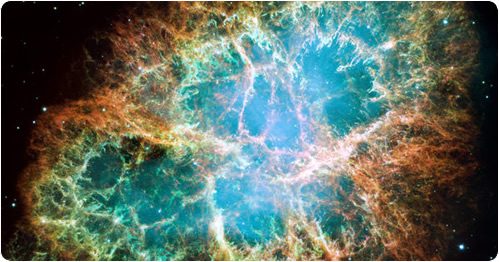When a massive star (greater than 8 times the mass of our sun) collapses at the end of its life, it radiates approximately 99% of its energy in the form of neutrinos. These neutrinos come in all flavours, and are emitted over a timescale of several tens of seconds.
The neutrino signal emerges from the core of a star promptly after core begins to collapse, whereas the photon signal may take hours or days to emerge from the stellar envelope. The neutrino signal can therefore give information about the very early stages of core collapse, which is inaccessible to other kinds of astronomy. Unlike other particles neutrinos are antisocial and difficult to trap in a detector. Under typical conditions, a neutrino is 100 billion billion times less likely than light to interact with matter and a neutrino will pass straight through our planet Earth as effortlessly as the breeze through an open window. It is the weak interaction of neutrinos with matter that makes them uniquely valuable as astronomical messengers. Unlike photons or charged particles, neutrinos can emerge from deep inside a supernova and travel across the galaxy without interference. They are not deflected by interstellar magnetic fields and generally are not absorbed by intervening matter. However, this same trait makes supernovae neutrinos extremely difficult to detect.
HALO uses large volumes lead to watch for a supernova neutrino burst. A neutrino interaction with lead produces a free neutron which elastically scatters in our detector until it is absorbed, exits the experimental area or is captured by our neutron detectors. Neutrons captured by our 128 Helium-3 detectors produce an electronic signal. Unfortunately other types of particles such as those created by cosmic rays in the atmosphere can deposit energy in our detectors. To filter them out, HALO is located 2 km underground and shielded from externally produced neutrons with approximately 10480 litres of water.
The famous supernova SN1987A, a gravitational collapse event in the Large Magellanic Cloud outside our Galaxy, was the first to have its neutrino signal detected. Two water Cerenkov detectors, Kamiokande II and IMB, detected 20 events between them. The SN1987A neutrino data, although sparse, was sufficient to confirm the baseline model of gravitational collapse and put some limits on neutrino properties as well. We patiently await a more copious neutrino signal to be able to make distinctions between different theoretical models of core collapse and supernova explosions.













